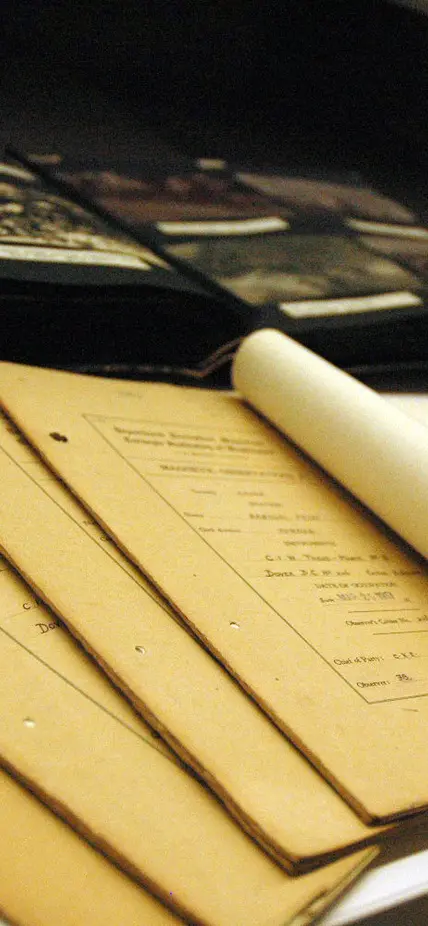The Plate Archives
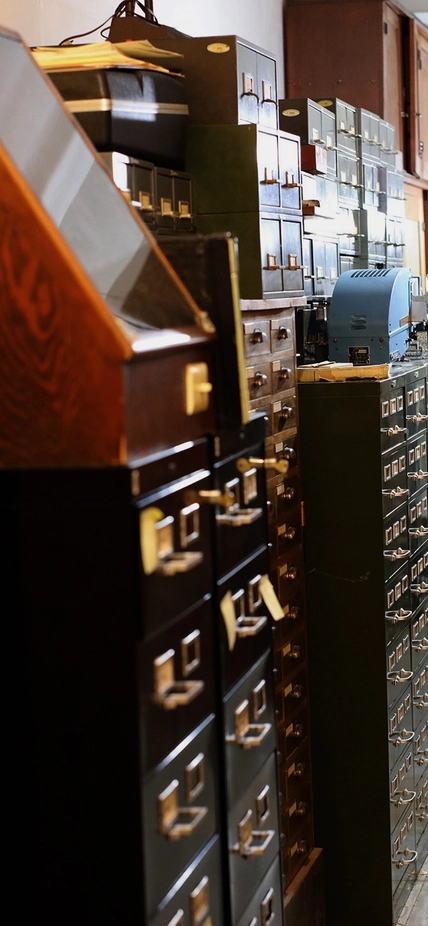
The Cosmos Captured on Glass
In the basement of the Observatories’ Santa Barbara Street office is the plate vault, home to the second largest collection of astronomical glass plates in the United States. The plate collection consists of over 200,000 glass plate negatives, including spectra, direct object images, and solar plates. These glass plates date from between 1892 and 1994 were created using telescopes at the Kenwood, Mount Wilson, Palomar, and Las Campanas Observatories.
Contact the Plate Archives at archives@carnegiescience.edu.
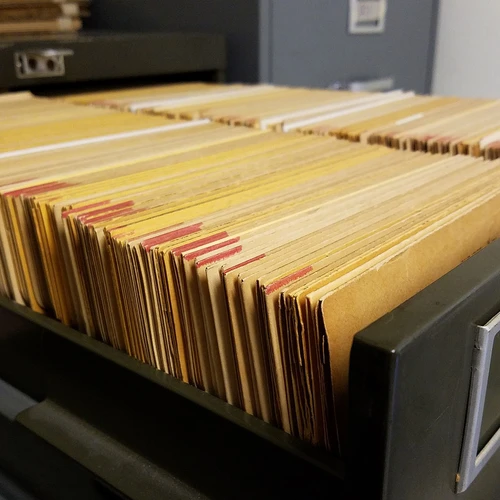
Use the Plate Archives Search Tool (PAST)
Search within over 200,000 astronomical glass plates from the Carnegie Plate Archives.
Search with PASTPlate Searches and Inquiries
Thanks to a generous grant from the Ahmanson Foundation and from The Kenneth T. and Eileen L. Norris Foundation, archivists have cataloged a portion of the Observatories’ plates. This effort was focused mainly on direct images of galaxies, nebulae, stars, and star clusters. Much of Carnegie's large holding of solar plates is being cataloged and digitized through a separate NSF-funded project at UCLA. So far, 95% of the non-solar direct image plates have been cataloged. Work will continue on the remaining 5% of the direct images and the spectroscopic plates as funding permits.
You may use our Plate Archive Search Tool (PAST) to search for specific items in the portion of our plate collection that has been cataloged.
Thanks go to George Carlson and Donna Kirkpatrick, who did the bulk of the work by entering the data from the envelopes of the glass plates (called “sleeves”). Observatories astronomer Chris Burns is responsible for creating and maintaining the online interface to the PAST database.
The plate collection is intended for scientific research purposes by accredited professional astronomers only. Initial inquiries about a particular plate or plates should be directed to archives@carnegiescience.edu. Please keep in mind that there is only one full-time staff member directly dedicated to the collection. We will try to locate plates in a timely manner, but do not have the capacity for broad searches and are often unable to assist in research. In some circumstances it may be possible to arrange for site visits by astronomers who wish to come to Pasadena and access the collection with the oversight of Observatories' staff.
The following is a guide to understanding the plate IDs for the Mt. Wilson Plate Archive. When the plates were inventoried, it was decided that only information printed on the envelope would be stored in the database. As such, there are many fields that lack information. As an example, searching the PAST database for the observer "Hubble" yields only 55 "hits"! But if one knows that the plate ID suffix "H" stands for Hubble, you can search the plate IDs ending with "H" and get a more respectable 2976 hits. It is hoped the following information will help with such queries. Credit goes to Francois Schweizer for compiling all of this.
Plate IDs 01: Generalities
In the good old days, each telescope, focus, and/or instrument had a unique prefix and the plate identification (ID). These ID prefixes were adhered to by most observers with the introduction of regular plate logs at the telescopes, post World War II (see Sandage reference below). Unfortunately, in the early Mt. Wilson days, they were often not adhered to, and observers routinely had their own way of labeling envelopes. Only the running plate number was pretty universally used.
References:
- Sandage, A., The Hubble Atlas of Galaxies (1961), p. 27
- Arp, H., Atlas of Peculiar Galaxies (1966) (plate listing)
Plate IDs 02: Direct Plates (including Image-Tube Plates)
Plate IDs are of the form X-NNNN-Y, where the prefix X refers to the telescope, the suffix Y refers to the observer, and NNNN is a running number.
| Observatory | Telescope and Prefix | Observers and Suffixes | |||||||||||||||||||||||||||||
|---|---|---|---|---|---|---|---|---|---|---|---|---|---|---|---|---|---|---|---|---|---|---|---|---|---|---|---|---|---|---|---|
| Mt. Wilson |
|
|
|||||||||||||||||||||||||||||
| Palomar |
|
Same as Mt. Wilson, plus the following:
|
|||||||||||||||||||||||||||||
| Las Campanas |
|
Observers were listed in log books instead of by suffix. These plates tend to have more complete entries in the database. |
Examples:
| S-1732-H | Plate #1732, 60-inch Mt. Wilson, obtained by Hubble |
| S-330-P | Plate #330, 60-inch Mt. Wilson, obtained by Pease |
| H-1607-H | Plate #1607, 100-inch Mt. Wilson, obtained by Hubble |
| H-2524-M | Plate #2524, 100-inch Mt. Wilson, obtained by van Maanen |
| A-93 | Plate #93, taken by Adams (?), probably 60-inch Mt. Wilson |
| PH-20-Bm | Plate #20, Palomar 200-inch, obtained by Baum |
|
PS 21122 |
Plate #21122, Palomar-Schmidt. No observer suffix, but observer field (Arp) is listed in the database. |
| PR 266 | Plate #266, Palomar 60-inch. No observer suffix, but observer (Schweizer) is listed in the database. |

Learn about the VAR! Plate
The famous M31 VAR! plate led Edwin Hubble to the groundbreaking revelation that the universe exists beyond our galaxy.
Learn more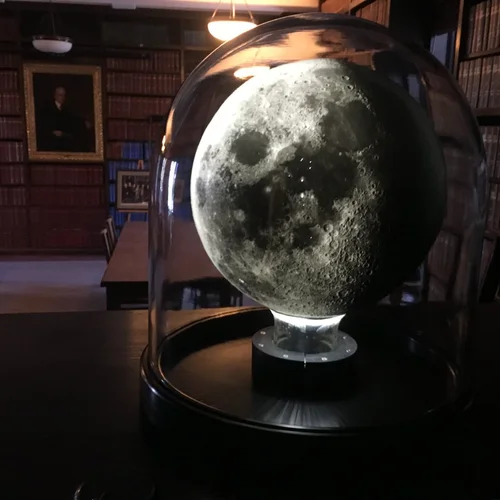
Visit the Hale Library
The Hale Library at the Santa Barbara Street office in Pasadena consists of a large astronomy and physics-related collection used to support the ongoing research at the Observatories
Learn moreTake a Virtual Tour of the Plate Vault
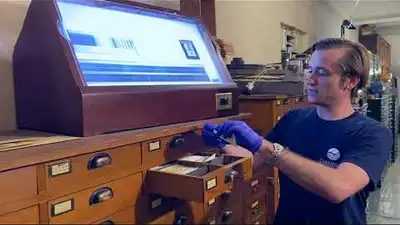
Enter the Plate Vault
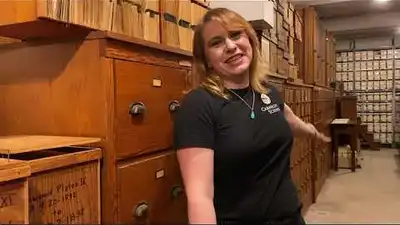
Plate Vault - Solar Room
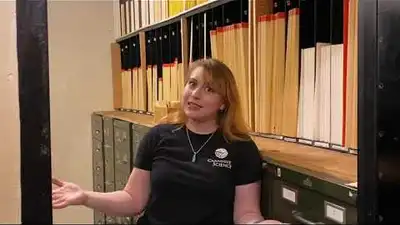
Plate Vault - Direct Images
